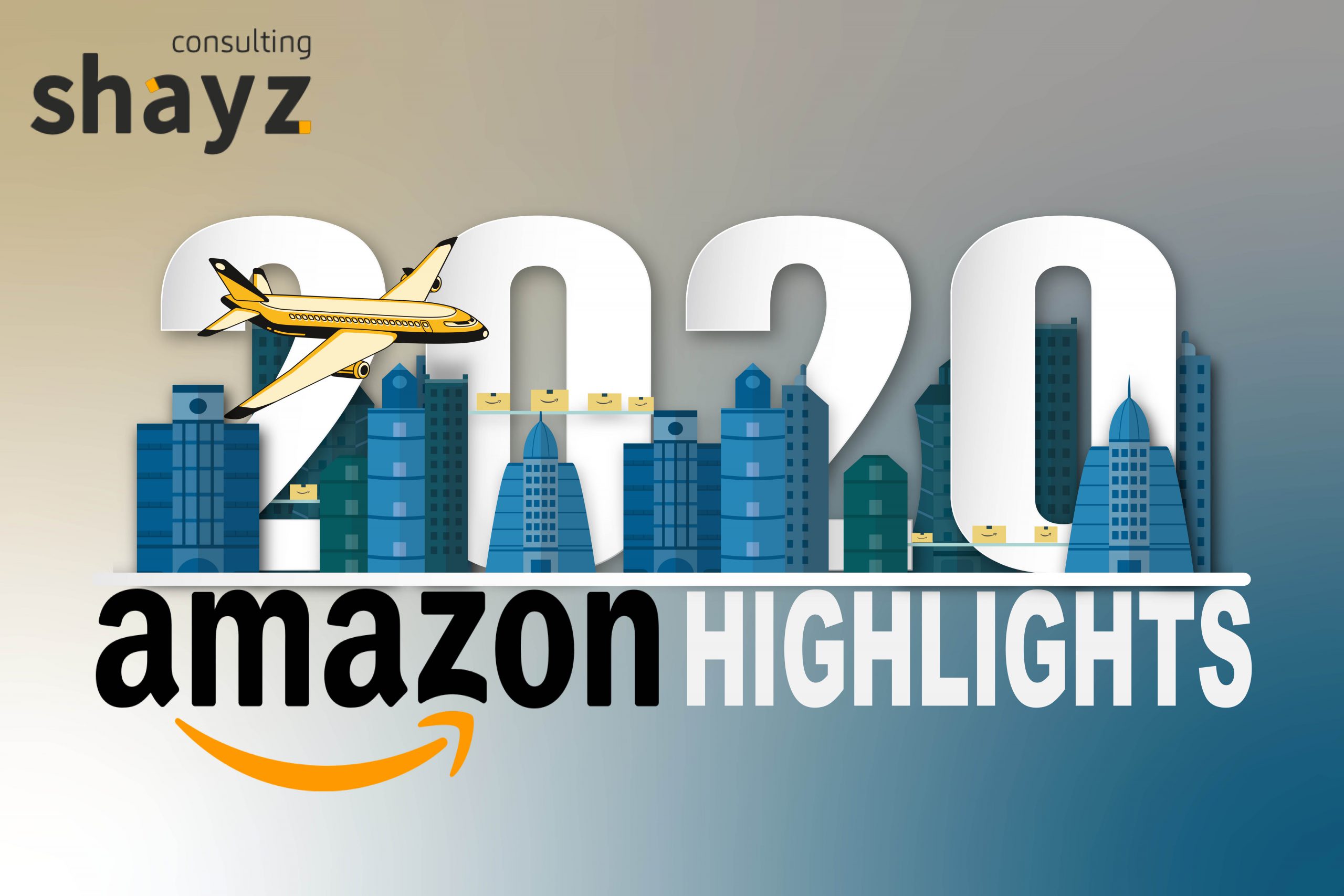
Most businesses won’t remember 2020 fondly. The coronavirus pandemic resulted not only in huge loss of life, but also in market shifts. The most conspicuous fact is that while small businesses suffered, corporations flourished like never before. 644 American billionaires gained almost $1 trillion, and Amazon’s founder Jeff Bezos has enjoyed the largest cut of the cake: last year his personal wealth went past $200 billion. No single person has ever accumulated that much wealth. 2020 was a goldmine for most corporations, but Amazon took it up a notch: call it aggressive tactics, call it the peak of capitalism, but what’s obvious is Amazon’s ability to consistently reach their goals by going the extra mile. And though they had ups and downs throughout 2020 (most of us have), Amazon is an example of a company that’s constantly up to something people want. Their success lies in listening to their customers. I really hope they get their act together as far as worker treatment goes, but aside from that, there are things to be learned from Amazon. Here are some of their 2020 highlights:
January: Amazon Invests in India
Amazon kicked off the year with bold ambition: Jeff Bezos announced a $1 billion Indian investment, claiming that the 21st century is “going to be the Indian century”. And that’s only the beginning of a total $5.5 billion investment. With high hopes for India’s growth in online retail, Amazon promised to export $10 billion worth of goods made in India by 2025. Amazon also boasted major growth in its employment rates, announcing that the company now has 798,000 employees, which is 23% more than in 2019. And if that’s not enough, Amazon killed it in Christmas sales, going up 21% from the previous year, earning $87 billion in the last three months of 2019, leaving brick-and-mortar establishments devastated as people increasingly prefer online shopping.
Though the online giant started off good, there was some turmoil regarding Amazon’s views on climate change. Apparently, over 350 employees have publicly criticized Amazon’s climate change record in connection with oil/gas industries as well as its carbon footprint, defying policies that say doing so could cost them their jobs. Activists claim that though Amazon announced measures to reduce emissions, it does not go hand in hand with supporting oil and gas industries, especially silencing employees who want to speak out on these issues.
February: Amazon Seeks to Create Jobs
Amazon announces new plans of expansion as they seek to create 15,000 jobs in Bellevue, a Seattle suburb that at that time employed just over 2,000 workers. The new jobs were planned to spread across several Amazon divisions, including operations, devices, Amazon Web Services, and Project Kuiper, the company’s internet satellite initiative. Jeff Bezos originally founded the company in Bellevue, and now he’s calling it “a growing, business-friendly city with great amenities, a high quality of life, and a fantastic talent pool.” Amazon also underlined their priority towards sustainable office buildings with access to public transportation.
At the same time, there were reports of Bezos selling nearly $4.1 billion worth of Amazon shares in the past 11 days. The transactions were made as part of a prearranged 10b5-1 trading plan, according to the SEC filings. In addition, Jeff Bezos bought what was called the ‘most expensive home’ in Los Angeles, paying $165 million for the property known as the Warner Estate.
March: Corona Crisis Hits Amazon
While January and February were relatively calm, March marked the beginning of economic disruption. Amid the rising corona pandemic, Amazon created a $5 million relief fund to help small Seattle businesses impacted by Covid-19. It was reported that Amazon would continue paying its hourly employees as its work from home policies were in effect, including subsidizing rent for businesses inside the buildings Amazon owns. However, on March 30, more than a dozen employees at Amazon’s Staten Island, New York, warehouse walked off the job to protest how the company responded to a coronavirus outbreak at the facility.
As the protests were happening, at least 13 Amazon warehouses had employees sick with Covid-19. Staff was concerned about working conditions at Amazon premises across the country, including a lack of screening for symptoms, inadequate social distancing practices and inefficient protective gear.
April: New Jobs And Bezos’ Wealth
As the pandemic had encompassed most of the world, Amazon announced that it was hiring for an additional 75,000 positions after bringing on over 100,000 new employees over the last month. The hiring of additional workers brought Amazon’s workforce under a million worldwide, an increase of more than 20% since the last quarter. Amazon had also built its own testing lab to monitor the health of its staff. There have been more than 50 reported Covid-19 cases in Amazon facilities across the US.
Amazon claimed to have assembled experts to build their own “incremental testing capacity”. Amazon staff have previously criticised the company over its response to the coronavirus pandemic. And while that was happening, Jeff Bezos saw his wealth grow by $24 billion since the world has been on shutdown.
May: Amazon Getting Back Customers
Amazon seeks to get their customers back by shipping items faster and running promotions, including removed limits on the types of products allowed in warehouses. And while Amazon delayed annual Prime Day, they prepared for an early Summer Sale to let brands sell excess inventory. These changes positioned Amazon to recapture its lost customers when the pandemic took hold. These decisions showed that Amazon’s leadership felt confident about the business (in particular its shipping network), meaning that it was no longer in crisis mode.
June: Unhappy Employees and Clients
Amazon faced criticism over treatment of their employees. Reports of unsafe warehouse practices have spun widespread attention; questions have been raised whether Amazon fired people who raised concerns on the lack of protection from the virus. Shareholders pressed Bezos and other executives for answers, but Bezos pushed back on these accusations, saying that Amazon quickly realized the need to protect workers during the pandemic and took necessary precautions.
While that was happening, Amazon also picked sides in the Black Lives Matter movement, which didn’t go unnoticed from those who don’t support BLM. Jeff Bezos claimed that Amazon doesn’t mind losing customers who oppose Black Lives Matter. The world’s richest man shared a racist email he received from a customer who had cancelled an order with the company and stated that his “business relationship” with the tech giant was over. Bezos said the sender was the “kind of customer I’m happy to lose”.
July: Sanctions
Amazon was set to pay $135,000 to settle alleged US sanction violations. The charges relate to goods and services sent to people located in Crimea, Iran and Syria, which are covered by Office of Foreign Assets Control (OFAC) sanctions, between November 2011 and October 2018. On a more positive note, Amazon’s shares topped $3,000 for the first time ever on July 6, pushing its valuation over the $1.5 billion mark. In the meantime, Jeff Bezos became $13 billion richer in just one day after shares in his company surged nearly 8%. The daily jump of Bezos’ wealth was the biggest ever recorded by Bloomberg’s billionaire tracker.
July was also the month that Amazon announced its second-quarter results: net sales had increased by 40% to $88.9 billion and earnings were up. “This was another highly unusual quarter, and I couldn’t be more proud of and grateful to our employees around the globe,” Bezos said in a statement at the time.He said that Amazon spent over $4 billion on incremental COVID-19-related costs in the quarter to help keep employees safe and deliver products to customers.
August: Amazon Sweden and Bezos’ Record
Amazon made its move towards launching in Sweden: a small step in hopes of building local infrastructure in the Nordics. Swedes could obviously already shop on Amazon through other countries such as Germany, but this often meant paying higher delivery fees. It was said that Amazon’s entry into Sweden had been talked about for years and could pose a challenge to local Swedish companies.
And once again, Jeff Bezos was breaking records on August 26. Amazon’s founder achieved an unprecedented accomplishment, something unseen in nearly 40 years of Forbes tracking net worths. With Amazon stock edging up 2%, Bezos’ net worth was up by $4.9 billion, making him the world’s first person to have a fortune of $200 billion.
September: Amazon Hiring Spree
Amazon announced that it’s recruiting 100,000 more workers. That was it’s fourth US hiring spree this year, all in hopes to keep pace with e-commerce demands that sparked during the pandemic. The world’s biggest online retailer said the positions are for full and part-time work in its home country and Canada, and these will include roles at 100 new warehouse and operations sites it is opening this month. As of June 30, Amazon employed 876,800 people, excluding freelancers and temporary staff.
October: Remote Work
Amazon claimed that some staff members will be able to work from home through June 30, 2021. At the time, Amazon had already reopened its offices with strict safety practices for those who wished to work in-house. Amazon followed several tech companies that have extended remote work until at least early 2021, including Apple, Facebook and Uber. Twitter even allowed employees to work from home “forever” if they wish. Less than 2 weeks later, Amazon revealed its third-quarter results on Oct. 29, and it was another blowout quarter as people continued to shop online amid the pandemic. Net sales increased by 37% to $96.1 billion in the third quarter of 2020, compared with $70 billion in the third quarter of 2019.
November: Amazon Starts Selling Prescription Drugs
Amazon announced the launch of Amazon Pharmacy, a new store on Amazon that allows customers to purchase prescription drugs online. Amazon Prime members who order from Amazon Pharmacy received free two-day delivery and up to 80% savings when paying without insurance. However, customers need to provide basic health information, such as whether they are pregnant, as well as date of birth, gender and insurance details. Some have questioned whether it’s a good idea to give away health data to a tech giant.
December: Amazon’s Holiday Season Sales
Amazon announced its “biggest holiday season to date” as customers chose online shopping instead of going to physical stores. Although CNBC noted that the company did not share actual sales figures for either Black Friday or Cyber Monday, in a blog post the company revealed figures for independent sellers on its platform. Amazon said these sellers saw over $4.8 billion in sales through the two shopping days worldwide, an increase of 60 percent over last year.

